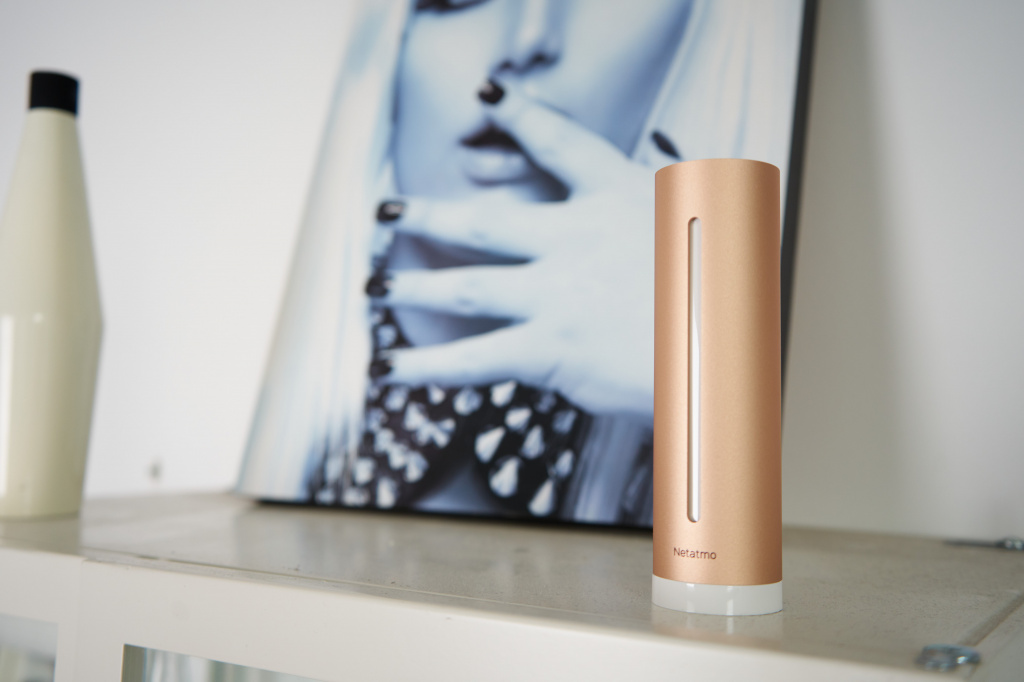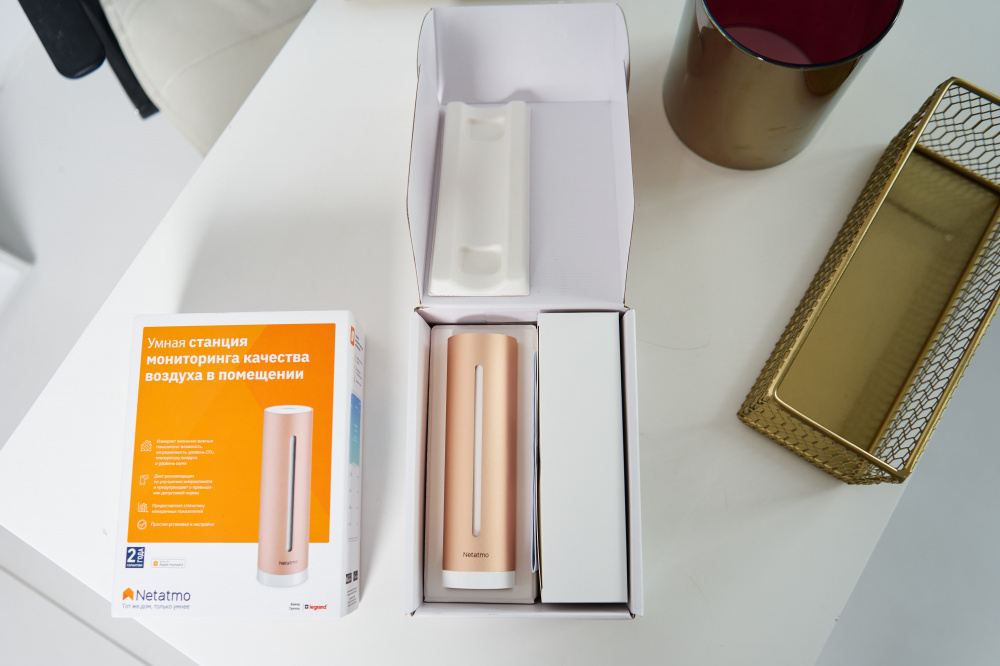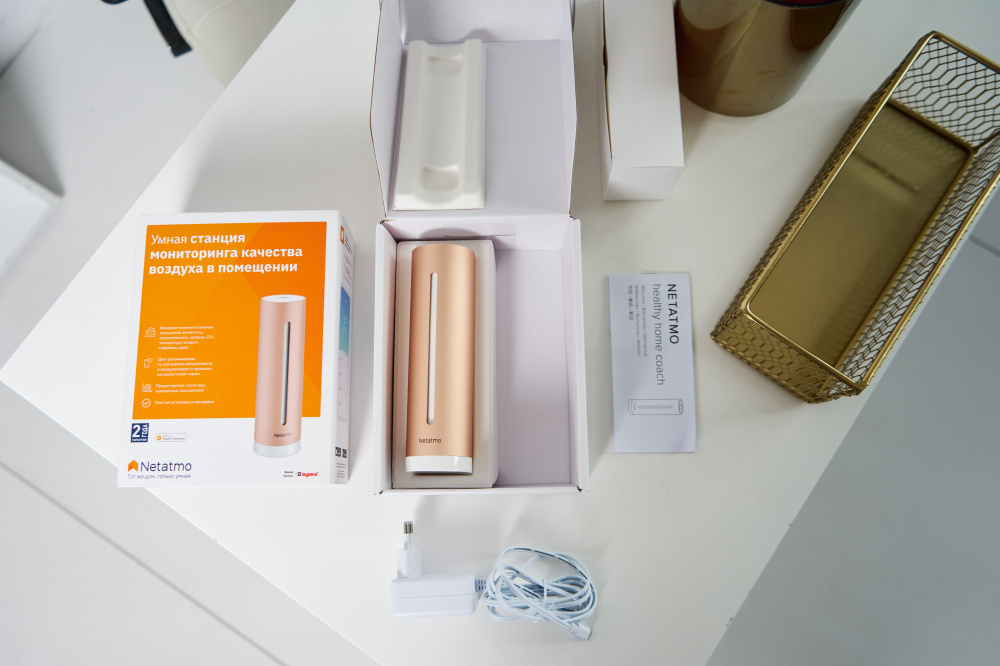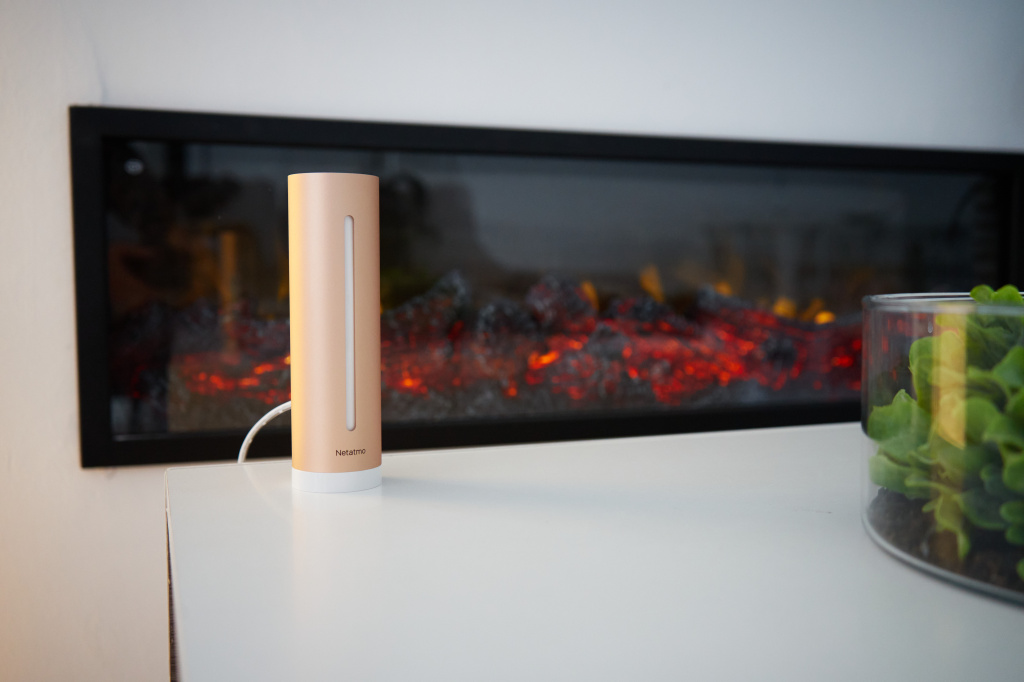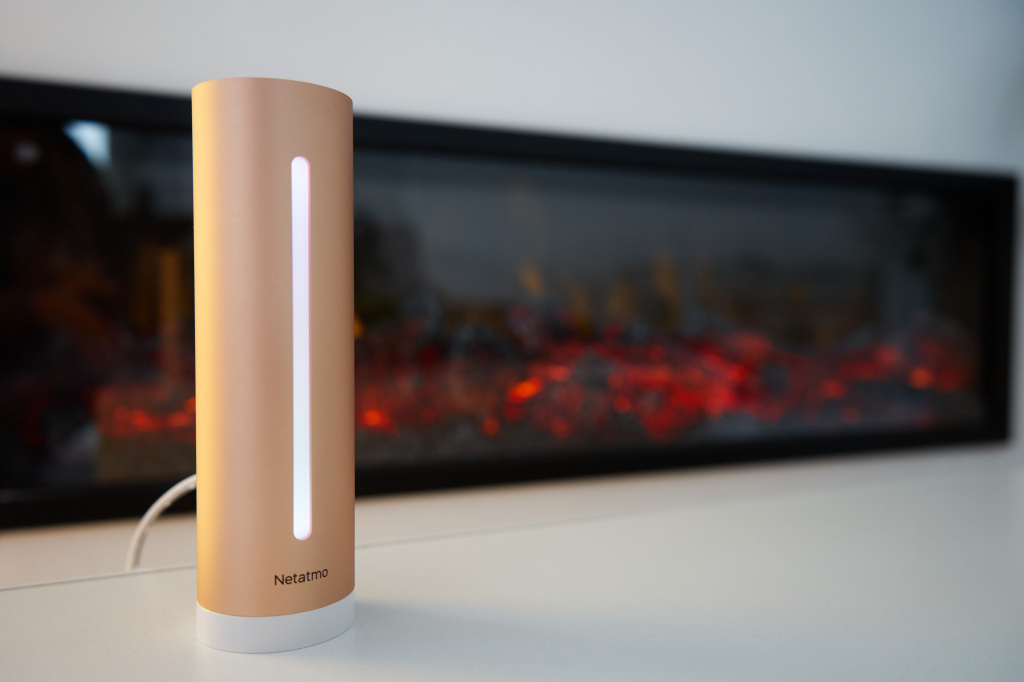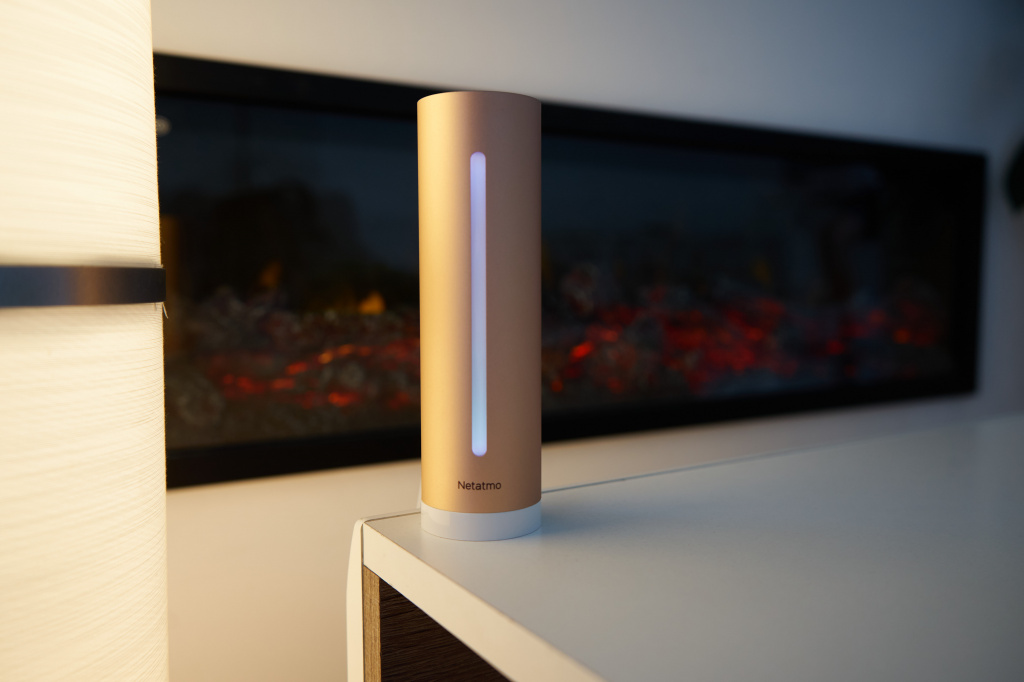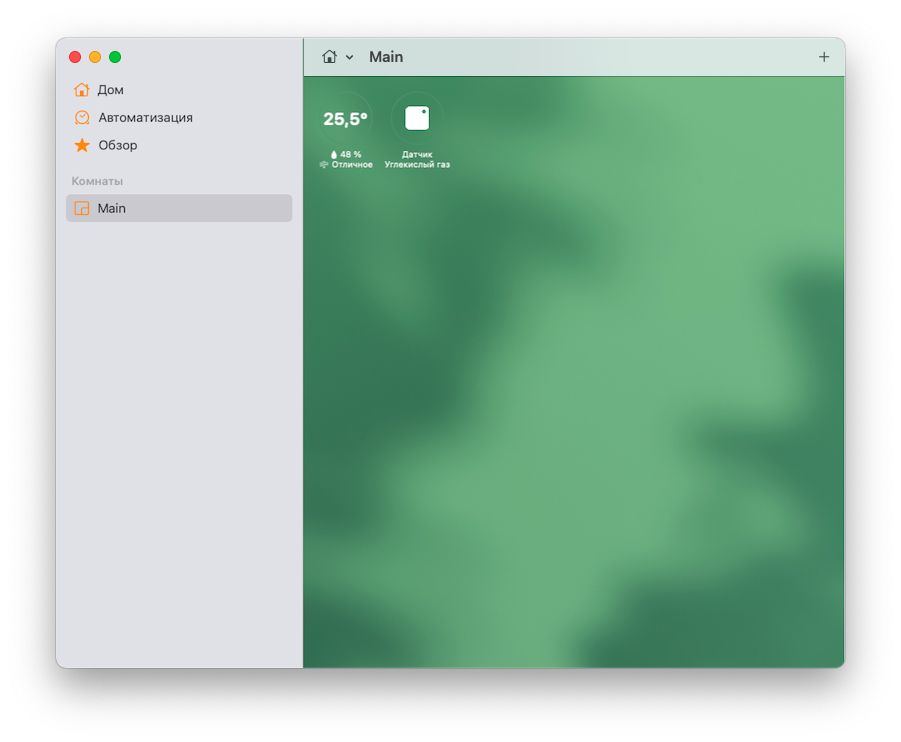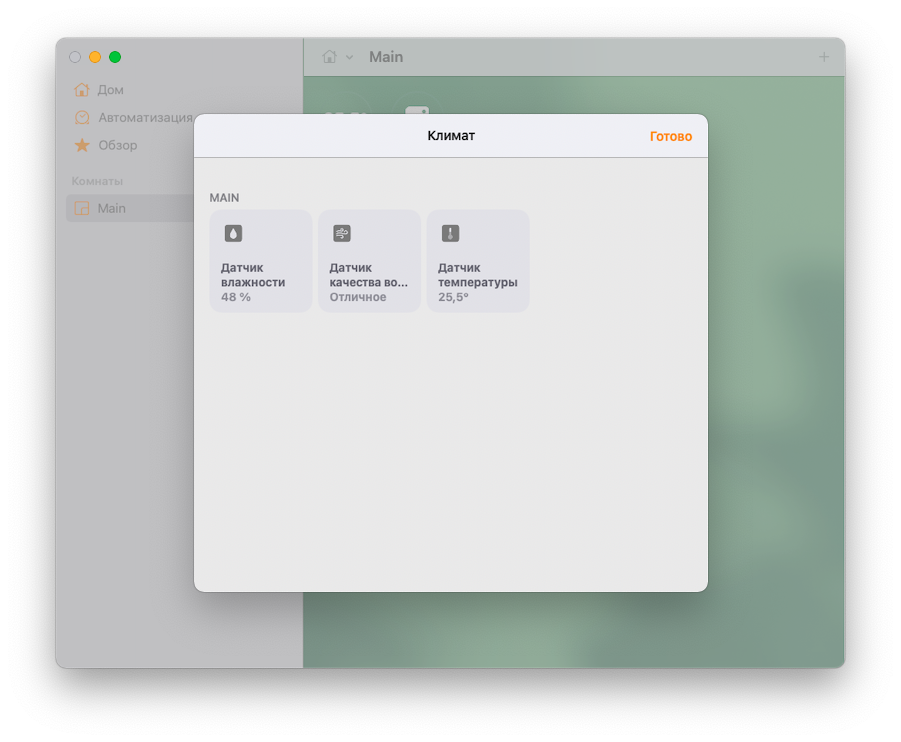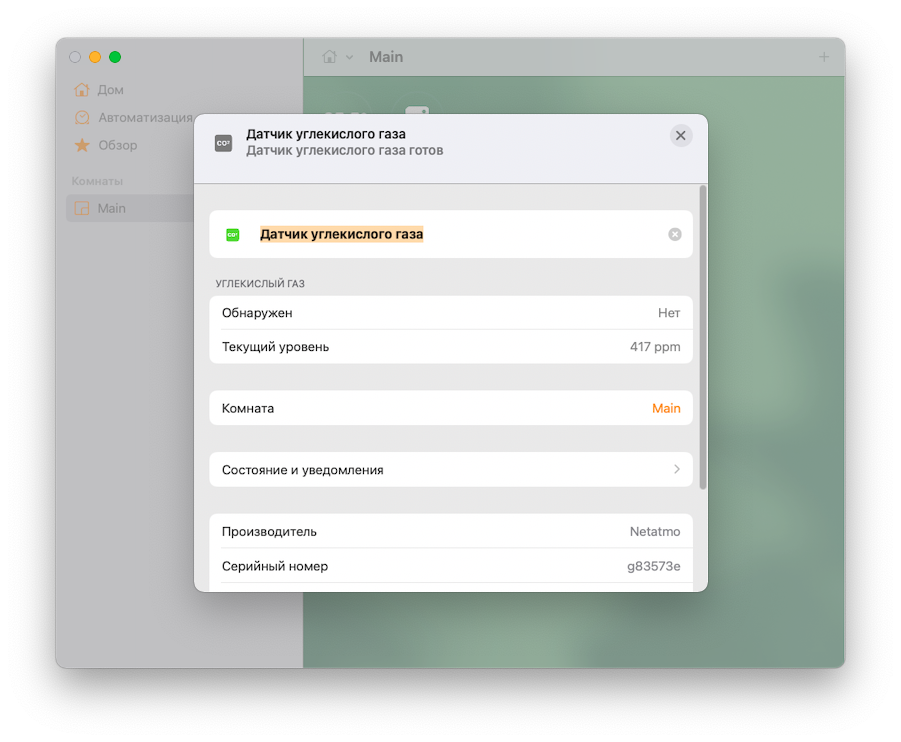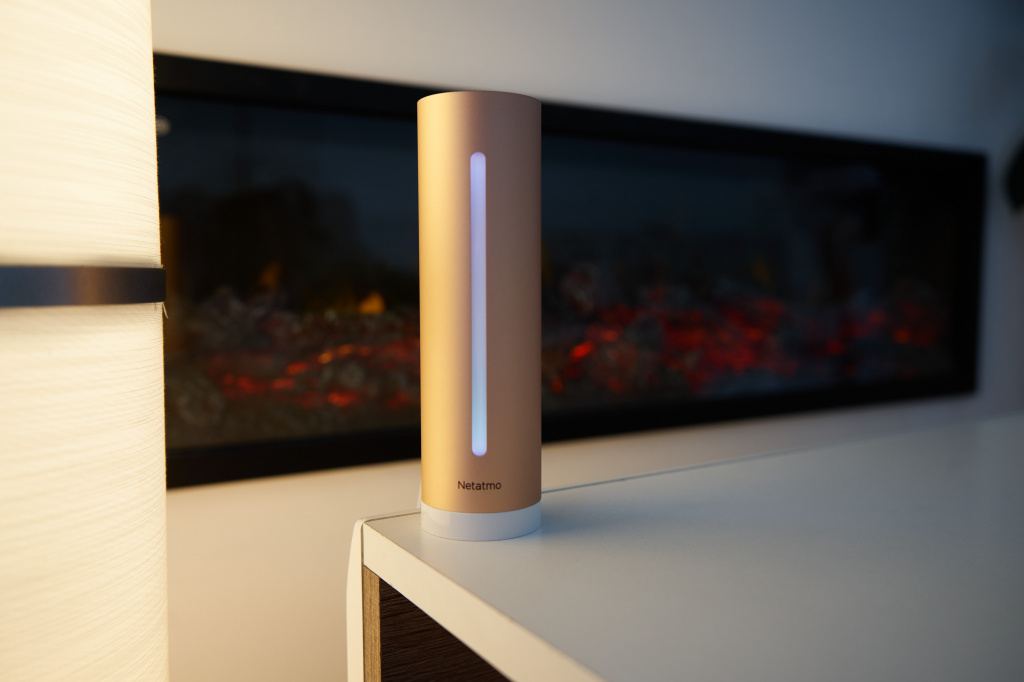- Обзор cтанции мониторинга качества воздуха Netatmo для создания комфортного климата дома. А еще она работает с Apple HomeKit
- Комплектация и дизайн
- Настройка
- Как добавить станцию Netatmo в систему умного дома Apple HomeKit
- В качестве итога
- Apple HomeKit compatibility with the Smart Home Weather Station
- Netatmo and Apple HomeKit: a long story
- Was software authentication possible?
- What can you do with the Smart Home Weather Station thanks to the compatibility with Apple HomeKit?
Обзор cтанции мониторинга качества воздуха Netatmo для создания комфортного климата дома. А еще она работает с Apple HomeKit
Поддержка правильной атмосферы дома — один из самых важных аспектов здорового образа жизни. Для этого необходим универсальный гаджет, который сможет собрать нужную информацию о температуре, влажности и качестве воздуха в помещении. Как раз такой один из таких гаджетов от бренда Netatmo побывал у нас на тестировании.
Одно из основных преимуществ станции мониторинга качества воздуха в помещении Netatmo — возможность интеграции в систему умного дома, например, Apple HomeKit. А теперь рассмотрим устройство подробнее.
Комплектация и дизайн
Гаджет поставляется в компактной коробке, внутри которой модуль станции, сетевой адаптер microUSB и техническая документация. Минималистичность также прослеживается и в дизайне.
Конструкция станции мониторинга качества воздуха Netatmo представляет собой корпус цилиндрической формы, на лицевой стороне которого размещен длинный световой индикатор. Сзади расположен разъем для подключения питания, а поверхность оборудована сенсорным датчиком.
Никаких кнопок и переключателей конструкция станции не предусматривает. Гаджет настраивается с помощью приложения, туда же поступает вся необходимая информация о состоянии воздуха в помещении. При необходимости об этом может рассказать индикатор, но об этом мы расскажем в другом разделе.
Настройка
Как и упоминалось выше, настройка станции осуществляется с помощью фирменного приложения Home Coach, которое можно скачать в App Store или Google Play. Для начала нужно учитывать один нюанс — станция работает с Wi-Fi 2,4 ГГц, как и большинство устройств умного дома сегодня. Это обусловлено более широким радиусом действия сигнала, поэтому необходимо включить mash режим в роутере или использовать данную частоту. Если еще не сделали ранее, запустите на роутере дополнительную сеть 2,4 Ггц. К примеру, мой Huawei AX3 запускает две сети – 2,4 Ггц и 5 Ггц по умолчанию во время первой настройки.
Подключаем станцию Netatmo к питанию и ждем, когда индикатор замигает. Если этого не произошло — нужно нажать на сенсорную поверхность в верхней части устройства. Теперь запускаем приложение Home Coach и следуем инструкциям.
Выбираем опцию «Настроить новое оборудование», и сразу после этого приложение начнет поиск умной станции мониторинга качества воздуха. После этого Home Coach предложит выбрать сеть Wi-Fi и присвоить имя устройству.
Вот так буквально в несколько шагов настраивается домашняя станция Netatmo. После этого приложение расскажет о значениях индикатора, с помощью которого можно узнавать состояние воздуха, не открывая приложение. Достаточно прикоснуться к сенсорной поверхности, и подсветка загорится определенным цветом:
- Синий — здоровая атмосфера
- Зеленый — хорошие показатели
- Желтый — средние
- Оранжевый — плохо
- Красный — всё очень плохо
В главном окне приложения Home Coach демонстрируется подробная разбивка показателей: температура, влажность, качество воздуха и уровень шума. Нажав каждый параметр, можно ознакомиться с его подробным описанием.
В правом верхнем углу расположены кнопки обновления показателей и доступ к графику, на котором можно просматривать изменения состояния всех составляющих домашней атмосферы.
Как добавить станцию Netatmo в систему умного дома Apple HomeKit
Предположим, что в вашей экосистеме Apple уже настроена система умного дома HomeKit. Если вы этого еще не сделали, то в приложении «Дом» нужно задать параметры вашей квартиры — присвоить жилищу имя и добавить комнаты.
Теперь открываем приложение Home Coach, переходим в настройки к разделу «Настроить HomeKit». Программа попросит выбрать ваш дом и комнату, в которой установлена станция, а затем откроется видоискатель камеры. С его помощью нужно отсканировать QR-код на тыльной стороне устройства.
После этих действий приложение оповестит о добавлении гаджета в систему HomeKit, а также расскажет, что теперь станцией можно управлять с помощью Siri и просматривать данные в программ «Дом» на iOS, iPadOS, macOS и tvOS.
В качестве итога
При первом включении станция Netatmo показала средний уровень углекислого газа в помещении. На протяжении дня окна у нас были переведены в режим микропроветривания. После того, как мы открыли полностью оконные створки, приложение Home Coach буквально спустя несколько минут отчиталось о хорошем состоянии воздуха, а после 15-20 минут проветривания датчик оповестил о «здоровой атмосфере».
В нашем случае контроль за воздухом в помещении будет полезен, поскольку летом мы активно используем кондиционер, а он ощутимо сушит домашний климат. Пока показатель влажности находится на хороших позициях, тем не менее мы уже задумались о приобретении увлажнителя воздуха.
В качестве основных преимуществ умной станции мониторинга качества воздуха в помещении Netatmo хочется отметить в первую очередь минималистичный дизайн, удобное и информативное приложение, а также возможность интеграции в экосистему Apple. Определенно, прибор поможет достичь комфортного климата, что немаловажно для здоровья.
Источник
Apple HomeKit compatibility with the Smart Home Weather Station
InterNet atmosphere. Netatmo. Our company’s first product, the Smart Home Weather Station, marks the beginning of our story back in September 2012. Since then we have developed other products to support you in the world of the smart home. We have also used these seven years to continuously improve the Weather Station.
Our objective: to continue offering you a new weather experience. Launching the three accessories and our Weathermap have enabled us to create a complete Weather Station as well as the world’s first community of connected weather stations. Developments such as the compatibility with Amazon Alexa have helped the Station evolve at the same time as the smart home ecosystem.
We have made each of these evolutions available for all our users, whether they purchased their Station in 2012 or this year. These upgrades to our software are automatic and free. This desire to constantly evolve our products is deeply rooted in our DNA. It allows us, on the one hand, to keep satisfying you by adding new services and, on the other hand, to avoid the phenomenon of programmed obsolescence from which the world of technology too often suffers.
The compatibility with Apple HomeKit, one of our users’ main expectations, is now available. Since 22 October 2019, new users of our Home Weather Stations can enjoy the compatibility with Apple HomeKit. We started laying the first bricks of the compatibility of our Stations three years ago. However, despite our best efforts, not all of our users will be able to benefit from this compatibility. We would like to explain why.
Netatmo and Apple HomeKit: a long story
In September 2012, we launched the Netatmo Smart Home Weather Station.
Apple Homekit was launched in iOS 8 in September 2014, after being announced at the WWDC 2014 (Apple Worldwide Developers Conference). These were still early days for the Smart Home, the functions were limited and not easy for everyone to access: there was no native Apple app for managing products compatible with HomeKit, it had to be through a third-party app. However, as we were certain HomeKit represented a real opportunity for the smart home, we decided to take a chance and make our products compatible. We started with the Thermostat. The benefit of this compatibility for our users seemed most important on this product.
In September 2015, we announced our Thermostat‘s compatibility with Apple HomeKit.
At the WWDC in June 2016, Apple announced the Home app as a new feature in iOS 10. The Home app, a real control centre for HomeKit accessories, made the potential of Apple HomeKit more tangible and justified the choice we made two years ago. We then took the decision to make our Weather Station compatible.
Hardware modifications (related to the electronics in our Weather Stations) were required in order to make the compatibility possible:
First of all, the HomeKit compatibility requires a large memory capacity. Requirements include, among others:
o Using asymmetric encryption algorithms to ensure the HomeKit identity and security. For a given iOS device, each user has a HomeKit identity used to authenticate the communication between iOS devices and HomeKit compatible products.
o Supporting the IPv6 network protocol, which is obligatory for HomeKit. Up until then the Stations only supported the IPv4 protocol. These protocols allow allocation of a unique address to each device (in this case the Station) that connects to the internet. This allows it to communicate over the network.
o Implementing the ‘Bonjour’ protocol which helps to easily configure products on a local network. This is the protocol used to configure the Station and allow it to communicate on the local network. It is based on the Multicast DNS service (Multicast Domain Name System).
As there was not enough space on the flash memory of our Stations’ processor, we took the decision to double its capacity.
We have also had to make changes to the Weather Station’s circuit board. The Stations connect to Wi-Fi at regular intervals to communicate their data to our servers. However, the HomeKit protocol requires a constant Wi-Fi connection. After carrying out tests, we realised that this constant connection was causing the circuit board to heat up which could distort the Station’s internal measurements. Due to the design of the circuit board at that time we were therefore unable to provide accurate internal measurements. We have therefore modified the implementation of the components on the circuit board to move the temperature and humidity sensor away from the Wi-Fi chip in order to limit the impact of the heat on the measurements.
In October 2016, less than 6 months after the announcement of the Home app, we began the first production of Weather Stations with hardware adapted to be compatible with Apple HomeKit. Significant software development and a whole certification process were required in order for our users to be able to benefit from this compatibility. All Stations produced (not sold) since this date are adapted to support HomeKit. The first Weather Stations produced over three years ago, before October 2016, do not have the right hardware and so cannot be compatible with Apple HomeKit. Our Indoor Air Quality Monitor, which contains the hardware evolutions as made for the Station, was launched compatible with Apple HomeKit. Although very similar in terms of mechanics and electronics, these two products differ when it comes to the software. The implementation of HomeKit on the Air Quality Monitor for its release required a specific development which we could unfortunately not use in the same way on the Stations.
In 2017 and 2018, we chose to make our Indoor Camera and Outdoor Camera compatible with HomeKit before our Weather Station. There were two main reasons for this choice. Firstly, the ‘Camera’ category already existed in the HomeKit accessories universe and the Home app, which was not the case for the Weather Station. Secondly, due to certain limitations of Apple HomeKit, we were waiting to see if future iOS updates would allow us to use the full potential of HomeKit on the Station.
Early 2019, we decided to work on making our Weather Station compatible with HomeKit to respond to the growing demand from our users.
22 October 2019, we began deployment so users of Weather Stations produced less than three years ago can use Apple HomeKit. To find out whether your Station is compatible and if so, how to use Apple HomeKit, please see this article and this article.
Was software authentication possible?
Since 2018 and the arrival of iOS 11.3, Apple allows us to authenticate a product that we want to be Apple MFi (Made for iPhone/iPod/iPad) certified via a set of software protocols without needing the traditional MFi chip, also known as ‘Authentication Coprocessor’.
An MFi certified product is a product authorised by Apple to communicate wirelessly and securely with an iOS device. This certification is one of the requirements to be compatible with Apple HomeKit, but it is not enough in itself.
The Smart Home Weather Stations have had an MFi chip since the start and support authentication by hardware. All Weather Stations produced since October 2016 are compatible with HomeKit and use their MFi chip for authentication.
In no case would implementing software authentication on Weather Stations produced before October 2016 have enabled us to make them compatible with Apple HomeKit. Firstly, this would not have prevented the problem of the circuit board heating up which could make the measurements inaccurate. Secondly, authentication by software would have required memory and the flash memory in the Station’s processor was not sufficient.
Implementing authentication by software is therefore neither possible nor desirable for the Weather Stations.
What can you do with the Smart Home Weather Station thanks to the compatibility with Apple HomeKit?
Apple HomeKit, Amazon Alexa or Google Home clearly defined the categories of ‘Thermostat’, ‘Camera’ and ‘Light’. The Weather Station is unique in the world of the Smart Home and smart objects in general. A category of Smart Home Weather Stations does not exist. Apple HomeKit considers the Weather Station as an aggregation of multiple monitors, each represented by a service (for example, the ‘humidity’ service).
You can therefore check the indoor and outdoor humidity and temperature, indoor CO2 level, indoor air quality and also the battery level for each module via your Home app. Data from the Additional Indoor Modules, placed in the other rooms, is also displayed in the Home app. Data for your bathroom, bedroom, kitchen or cellar can therefore be viewed via the Home app. Data concerning noise, atmospheric pressure, wind and rain are not currently displayed in the Home app. Apple allows us to declare customised services but these are not visible in the Home app (for example, the ‘noise’ service).
You can ask Siri for the measurements displayed in the Home app. You just need to say: “Hey Siri, what’s the temperature on the balcony?” or “Hey Siri, what’s the CO2 level in the living room?” to get information about your environment using your voice.
You can use the automations available with HomeKit in the Home app to trigger a scenario if CO2 is detected or if the air quality becomes poor. If the CO2 level becomes too high, your Apple HomeKit compatible lights will switch on to alert you. Air quality is a more general notion. It takes into account temperature, humidity and air quality. For example, your Apple HomeKit compatible plugs will switch on the device they are connected to. The Home app does not currently allow you to create automations related to temperature and humidity because these services are not recognised as triggers.
This new compatibility allows the Station’s role to change from informant to actor. It goes from being a Smart Home Weather Station that gives you key information about the precise conditions of your environment in real time to being the heart of your smart home’s ecosystem. The Station’s multitude of measurements make it a key product for triggering automations based on your environment. Today, 5 sets of data from the Station can be used for these purposes. We hope that future updates of the Home app will allow the full potential of the Weather Station measurements to be used and we will do whatever is necessary for you to benefit from this.
Although this new compatibility is not available for all our users, we want to assure you that we will always do everything we can so that future evolutions of the Smart Home Weather Station can benefit as many of you as possible.
Источник
